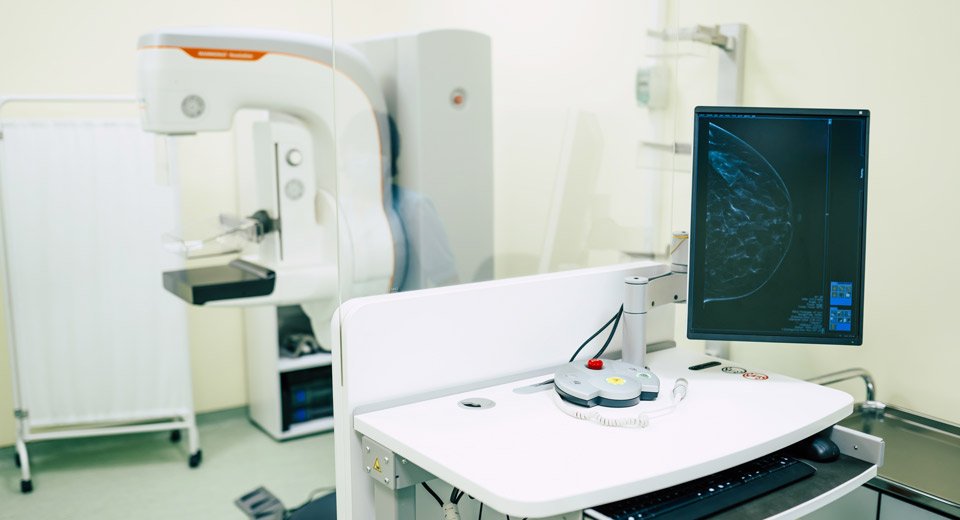8 common mammography questions answered

Over the years, the guidelines surrounding mammograms have changed to reflect the most recent evidence and outcomes. This means that women are sometimes confused about whether and when they need a mammogram. We asked radiologist Ingrid Hyder, MD, who is also the medical director at the Cuda Women’s Health Center in Hyannis, about some of the most common patient questions. Following are the questions and Dr. Hyder’s answers.
What are the current recommendations to begin screening mammograms?
Sometime, usually around the age of 25, it is recommended that women undergo a risk assessment, and that’s something they can have done at the Cuda Breast Care Center at CCHC or Falmouth Breast Care Center at CCHC. It’s basically to distinguish between average risk and elevated risk for breast cancer.
For average-risk women, which is the majority, the recommendations are pretty straightforward: annual screening mammograms starting at age 40 and that’s pretty much it. It is a little bit more involved when it comes to women at higher risk, including people with a family history of first-degree relative with breast or ovarian cancer or a cancer gene mutation. For those patients, usually annual screening mammograms will start at age 30 and be combined with annual breast MRI.
The American College of Radiology and the Society of Breast Imaging have a set of mammography recommendations for average risk women, which can be found by clicking here and here.
Recommendations for high risk women can be found by clicking here.
Do I still need a mammogram if no one in my family has had breast cancer?
Absolutely, the recommendations are annual screening mammography starting at age 40 for average risk women, so that includes most women. And the reason for that is that the vast majority (about 85%) of breast cancer actually occurs in women who have no family history. So, it’s very important to have that screening mammogram every year especially and even if there is no family history.
Can I have a mammogram if I am pregnant or breastfeeding?
The answer is yes! If a mammogram is recommended because you meet the screening criteria, or if a diagnostic mammogram is recommended because there’s a symptom that needs to be worked up, then mammography can be done in pregnant and breastfeeding women just the same as in non-pregnant and non-breastfeeding women. The radiation dose of mammograms now, including 3D mammograms, is so low that it is absolutely considered safe. There is no shielding required or even recommended. It is exactly the same as everyone else. The only difference for breast-feeding women is we suggest breast-feeding or pumping just before the exam.
Is it safe to have a mammogram if I have implants?
Yes, it is safe. There are some special approaches required when doing mammograms with implants, so it is important to tell your technologist. The special approaches are to ensure that the visualization is good, so if you have implants you can expect to have eight pictures instead of four. There will be four that include the implants, so that helps the radiologist see all of the breast tissue, and then there will be four that are called implant displaced and that is with the implant outside of the field of view.
What type of mammogram do I need if I have a breast lump or breast pain?
For breast symptoms, such as lumps, pain, nipple discharge or nipple changes, we will do a workup called a diagnostic evaluation. At Cuda, this begins with an appointment with one of our advanced practice providers who will do a clinical breast exam. Then we do a diagnostic mammogram, so that means a problem-solving kind of mammogram, which might include special views of the areas that are specifically of concern and usually a targeted ultrasound as well. Finally, the patient will receive same-day results – both the results of the investigation and a plan for the next steps if there are some.
If I am over 40 and I have dense breasts, why can’t I just get an ultrasound, since I’ve heard mammograms don’t work on dense breasts?
Mammogram is the only screening method that’s been proven to decrease deaths from breast cancer. This is true regardless of breast density. While in dense breasts, mammography can be a little bit less sensitive than in non-dense breasts, it’s still the best technique for screening. Mammogram shows many things that don’t show up on ultrasound at all so it is absolutely essential that everyone should have an annual screening mammogram. For women with dense breasts who desire supplemental screening, breast MRI is recommended.
What age should I stop getting mammograms?
There is no age cut-off to stop screening mammography. What we tell patients is if you’re in good health and you would act on something that was found on a mammogram, then by all means you should go ahead and keep screening.
Some women get to a point where they feel that even if they developed cancer, they wouldn’t want to get treatment or do anything. If that’s the case, then it’s really not necessary to keep going with screening mammograms, but we don’t tell women that they are too old to get a mammogram. Also, it’s always appropriate to have a conversation with your doctor and weigh the benefits and downsides of continuing with screening.
Why is it necessary to compress the breast during mammograms?
Compression is actually very important because it is what allows one to image a three-dimensional structure in a more two-dimensional way. It allows the abnormal tissue, if there is some, to stand out from the normal tissue that surrounds it. So, compression allows you to be more sensitive to find cancers. It also prevents normal tissue from looking like cancer, and that means that it reduces the call-back rate. I know that it’s sometimes not comfortable, but adequate compression really maximizes image quality.
